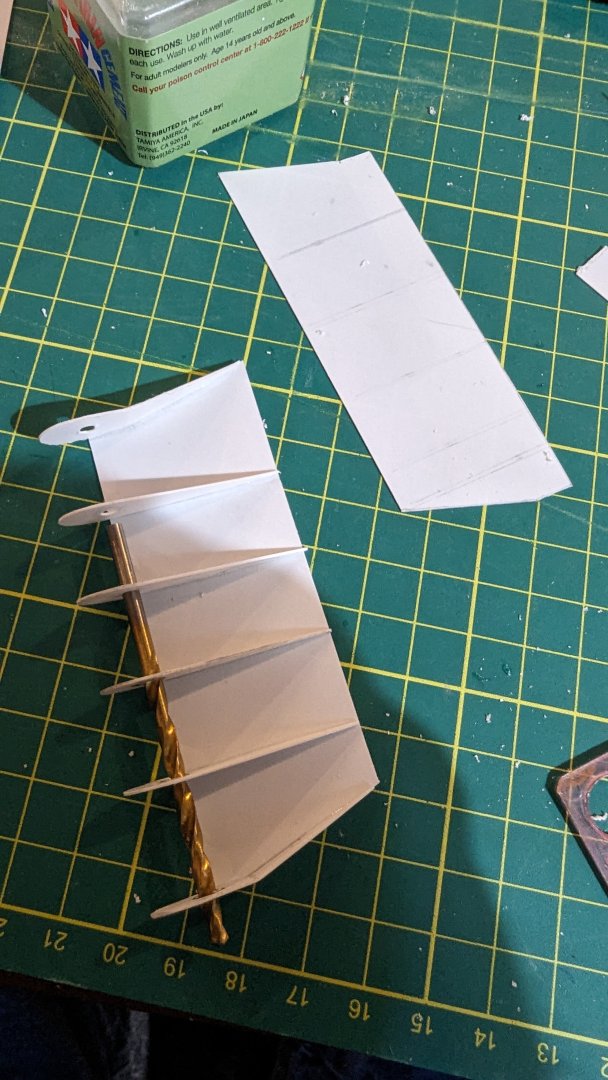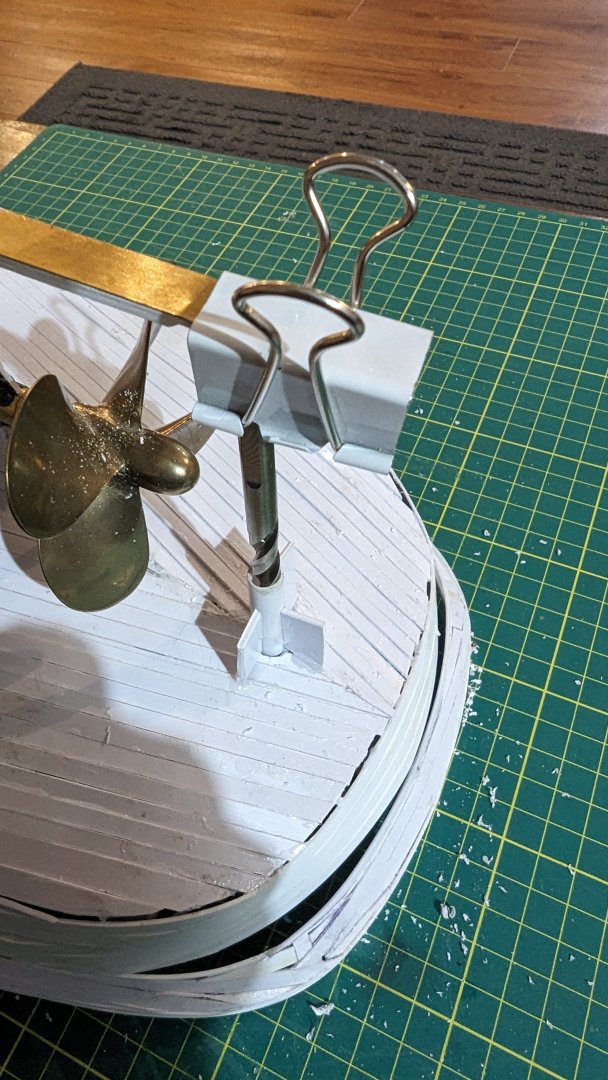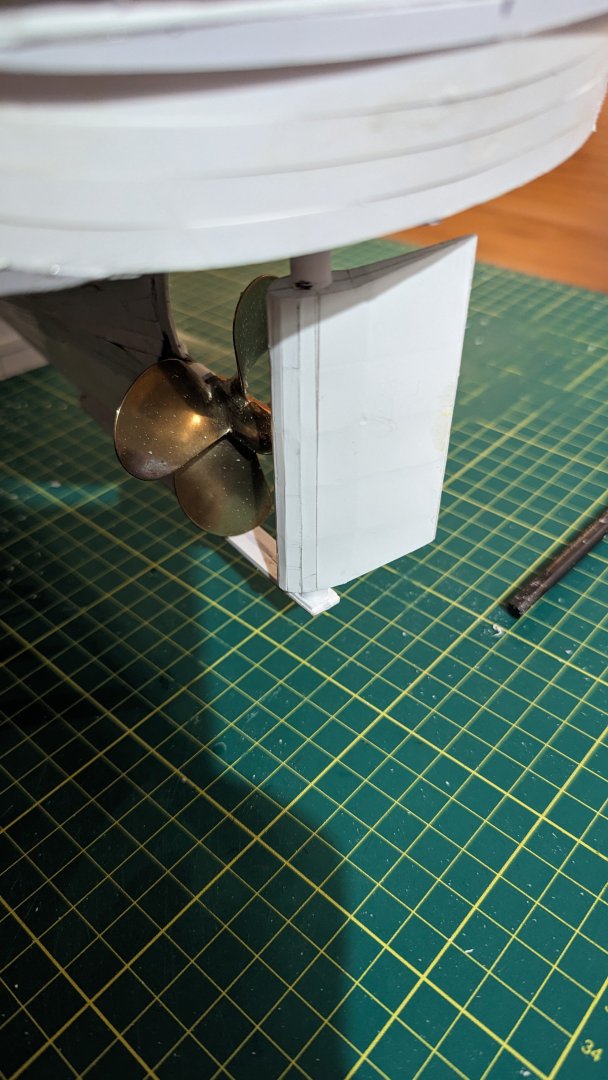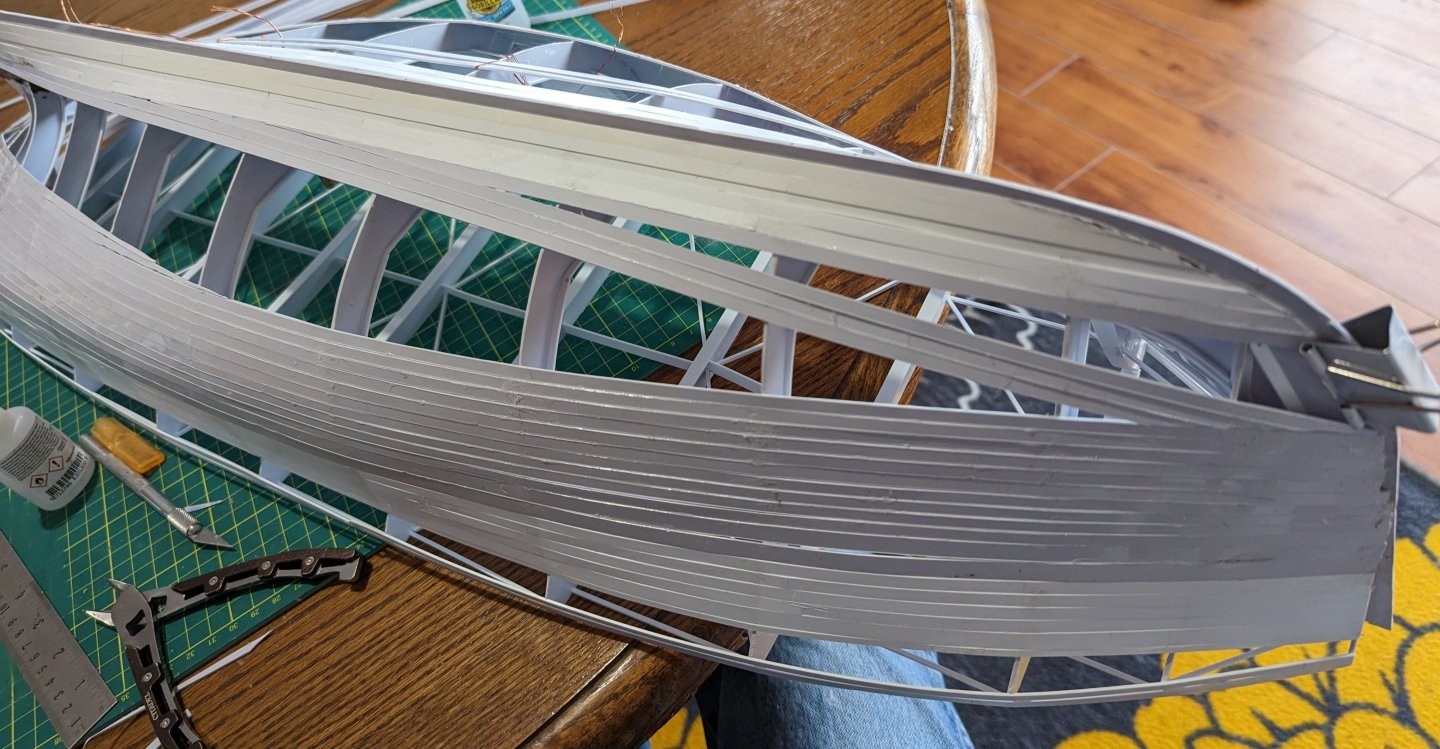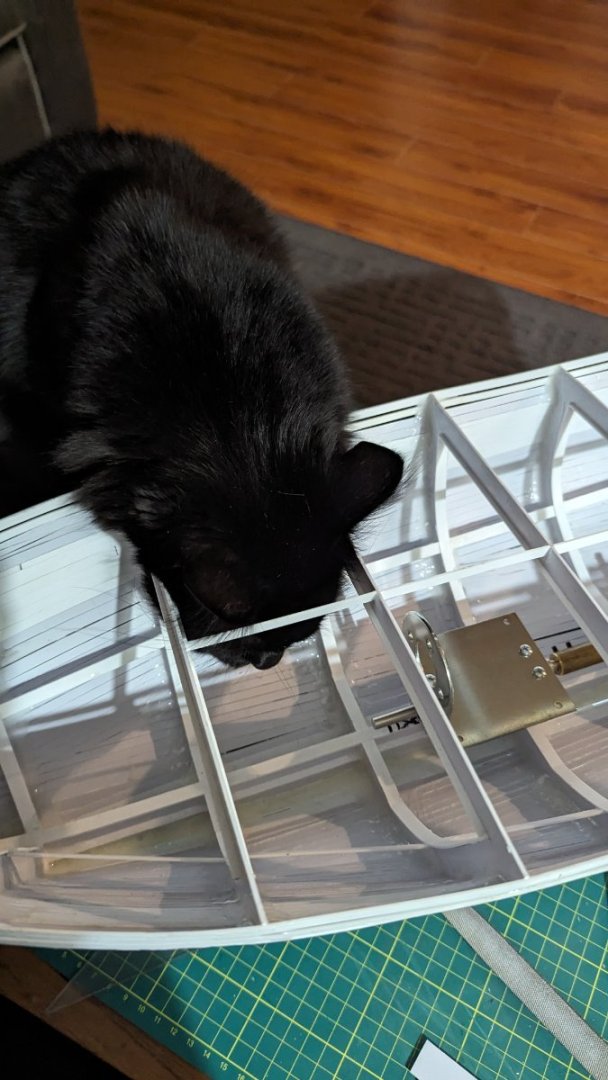
64Pacific
Members-
Posts
53 -
Joined
-
Last visited
Recent Profile Visitors
The recent visitors block is disabled and is not being shown to other users.
-
 Admiral Rick reacted to a post in a topic:
Norden 603 by Scott Crouse - Billing Boats - 1/30
Admiral Rick reacted to a post in a topic:
Norden 603 by Scott Crouse - Billing Boats - 1/30
-
 Scott Crouse reacted to a post in a topic:
Norden 603 by Scott Crouse - Billing Boats - 1/30
Scott Crouse reacted to a post in a topic:
Norden 603 by Scott Crouse - Billing Boats - 1/30
-
I maybe really late to the party but they make decals for rivets and weld beads. Check out these guys, I've got nothing to do with the websites: https://www.ultracast.ca/Rivet-Surface-Detail-Decals-s/1052.htm Also check out Archer Transfers, they have weld, rivet and texture decals... https://www.archertransfers.com/ I've never tried any of these but want to now that reading this thread has me thinking about... For 1/200 scale, N scale will be very close at 1/220...
-
 yvesvidal reacted to a post in a topic:
Malaspina Straits by 64Pacific - 1:24 - PLASTIC - RADIO
yvesvidal reacted to a post in a topic:
Malaspina Straits by 64Pacific - 1:24 - PLASTIC - RADIO
-
 ccoyle reacted to a post in a topic:
Malaspina Straits by 64Pacific - 1:24 - PLASTIC - RADIO
ccoyle reacted to a post in a topic:
Malaspina Straits by 64Pacific - 1:24 - PLASTIC - RADIO
-
It's time that I update this thread and carry on where I left off some time ago. Currently the project is in a bit of a holding pattern, while still on the books it had to take a back seat to my logging truck rebuild, work and a few other things requiring my time; not a lot has happened in the last 14 months. However prior to this hiatus the project did see its first water test, one which turned out much better than anticipated. To carry on from my last post work was done to mount the motor and steering gear inside the hull: With this done, the next step for was to do a bit of experimenting. A concern was the adhesion of body filler, styrene plastic and fibreglass and it's differing rates of expansion when subjected to extreme temperature swings. As luck would have it, we were expecting to see -45C in the coming weeks so a few test rigs were made. These rigs had a defined profile, one that I could compare to a go / no-go gauge and mimicked my hull construction. One was lined with fibreglass mat and body filler applied over this and the other smoothed with filler and then covered with fibreglass mat. Once the fibreglass and body filler were cured and sanded these two rigs were toss out into a snowbank to freeze. After a week they were brought into the house, twisted, dropped and kicked and then placed near the toasty warm wood stove. With a temperature swings of about 70 degrees no distortion or separation was noted; both good news for my logging truck and the tug. Here are the rigs after their torture in the cold, they aren't pretty: I am not too sure which route to go for glassing the hill. With body filler over the glass sanding is a breeze, however body filler will absorb water over time and any scratches in the paint system may allow this to occur. With glass over body filler sanding will be a bit more tedious but the hull less susceptible to damage. In regards to strength, I believe both to be roughly the same strength, what are your thoughts?
- 11 replies
-
- Malaspina Straits
- plastic
-
(and 1 more)
Tagged with:
-
 mtaylor reacted to a post in a topic:
La Créole 1827 by archjofo - Scale 1/48 - French corvette
mtaylor reacted to a post in a topic:
La Créole 1827 by archjofo - Scale 1/48 - French corvette
-
 Jack12477 reacted to a post in a topic:
La Créole 1827 by archjofo - Scale 1/48 - French corvette
Jack12477 reacted to a post in a topic:
La Créole 1827 by archjofo - Scale 1/48 - French corvette
-
 Keith Black reacted to a post in a topic:
La Créole 1827 by archjofo - Scale 1/48 - French corvette
Keith Black reacted to a post in a topic:
La Créole 1827 by archjofo - Scale 1/48 - French corvette
-
 archjofo reacted to a post in a topic:
La Créole 1827 by archjofo - Scale 1/48 - French corvette
archjofo reacted to a post in a topic:
La Créole 1827 by archjofo - Scale 1/48 - French corvette
-
 Archi reacted to a post in a topic:
Ship Model Building - Gene Johnson
Archi reacted to a post in a topic:
Ship Model Building - Gene Johnson
-
The next step was to build the rudder and shaft, a few shapes were laid out from the drawings, cut and glued. The goal here was to build the rudder as close to the design shown, the correct number of stiffeners using plastic that is as close to scale as possible: The keel below the rudder was built up per the drawings as well. A strip of brass as glued to the underside to help hold the shape below the rudder: Next using the boss glued to the keel a drill bit was used to align another piece of tubing inserted into a hole crudely cut through the hull. Once the glue set this fixture was used to drill straight through the ribs which would intersect the rudder shaft: The rudder assembly, a piece of brass rod was chucked into the drill press and small file used to cut a couple o-ring grooves. A piece of 3/16 brake like was cut to length. The brake line would be fixed in the hull and act as a bearing surface for the o-rings. It can't be seen in the photo but the brass shaft is continuous, it will need to be cut in half, keyed and the lower half glued to the inside of the rudder: The rudder installed in the hull for a test, it will need to be removed to tidy up the hull. Without the splice in the rudder shaft it has proven quite difficult to remove the rudder without bending the keel. A bit of lube down the hull mounted rudder tube to release the o-rings from the steel brake line should allow me to get the brass rudder shaft out to cut in half.
- 11 replies
-
- Malaspina Straits
- plastic
-
(and 1 more)
Tagged with:
-
It has been a while since I last updated this thread. There hasn't been a lot of progress lately due to work and trying to get my old logging truck running and painted. To continue with catching up to my current state on the project here are a few photos of the planking. My "helper" adjusting a few parts shortly after removing my first attempt at planking: Starting at the keel strips of styrene are being added. My thinking was to start here to reinforce the keel and the joint between the ribs and the keel: Back into the MDF jig the next strips were added to the top edges of the ribs. A lot of wire and clamps were added to hold everything inline and tight to the ribs a lot of care was taken to ensure that the ribs stayed true and were not twisting as the planks were tied on and fixed with plastic cement: The curves at the stern were a real battle, not quite right but nothing that body filler and fibreglass can't fix. There must be a better way to do this:
- 11 replies
-
- Malaspina Straits
- plastic
-
(and 1 more)
Tagged with:
-
64Pacific started following Ship Model Building - Gene Johnson
-
Hello all, I am not certain if this is the correct place for such a query, apologies if it is not. I've recently purchased a nice copy of the aforementioned publication, specifically the 1961 edition. On the dust jacket it is noted that there are "drawings and complete working plans for Clipper Ship, a...". In flipping through this book I've seen a lot of nice sketches and drawings but no working plans, or what I would consider working plans. While the book looks complete I am wondering if, or where, in the book one finds these working plans? As an example, on page 285 the book notes under the brief section of "The Monitor and The Merrimac - Folded Plan" but there are no folded plans... Thanks!
-
This is really neat, being able to follow along with your build and the rebuild of the prototype. Definitely inspiring but my boat building skills are not there yet...
- 174 replies
-
- Vigilance
- Sailing Trawler
-
(and 1 more)
Tagged with:
-
Trying to understand white balance
64Pacific replied to Gaetan Bordeleau's topic in Photographing your work. How to do this.
A few years ago I was playing with custom white balance, I wanted to see what would happen if I used some colour that wasn't white.Tthe idea was to drastically see the effect as I wasn't sure what was going on. I had a burgundy box in front of me, I found something with a green or cyan tint to it, the greenish colour was used as the white balance set point, it just happened that the colours were roughly opposite one another on the colour wheel. The camera is now trying to adjust for what it thinks is green light removing the green to get to white. With this custom cyan / green white balance I snapped a photo of the burgundy box. The burgundy sections of the box were nearly converted to grey while the colours with less green stayed a little closer to their actual but were tinted with a green hue. It seemed to me that the colour opposite that of the white balance on the colour wheel was essentially removed from the image. It was a really long time ago that I did this so maybe I will try again and post some tests... -
Laptop recommendations?
64Pacific replied to Mike Shea's topic in CAD and 3D Modelling/Drafting Plans with Software
Definitely go with what Ron is saying. For my last build (primarily for Siemens Solid Edge) I bought the fastest (per core) processor that I could afford, substituting quantity of cores for speed. The other consideration is graphics hardware. While there is a hefty price difference you will notice a significant speed and stability increase when using professional grade hardware. Gaming graphics, while powerful have different architecture and 3D CAD software is not optimized for this architecture. All of that said, probably the biggest and most inexpensive upgrade that you can make for a 3D CAD machine is an SSD followed by a lot of fast RAM. -
I think that the timber joints on this model are built to a tighter tolerance than the original ship, spectacular work!
About us
Modelshipworld - Advancing Ship Modeling through Research
SSL Secured
Your security is important for us so this Website is SSL-Secured
NRG Mailing Address
Nautical Research Guild
237 South Lincoln Street
Westmont IL, 60559-1917
Model Ship World ® and the MSW logo are Registered Trademarks, and belong to the Nautical Research Guild (United States Patent and Trademark Office: No. 6,929,264 & No. 6,929,274, registered Dec. 20, 2022)
Helpful Links
About the NRG
If you enjoy building ship models that are historically accurate as well as beautiful, then The Nautical Research Guild (NRG) is just right for you.
The Guild is a non-profit educational organization whose mission is to “Advance Ship Modeling Through Research”. We provide support to our members in their efforts to raise the quality of their model ships.
The Nautical Research Guild has published our world-renowned quarterly magazine, The Nautical Research Journal, since 1955. The pages of the Journal are full of articles by accomplished ship modelers who show you how they create those exquisite details on their models, and by maritime historians who show you the correct details to build. The Journal is available in both print and digital editions. Go to the NRG web site (www.thenrg.org) to download a complimentary digital copy of the Journal. The NRG also publishes plan sets, books and compilations of back issues of the Journal and the former Ships in Scale and Model Ship Builder magazines.








